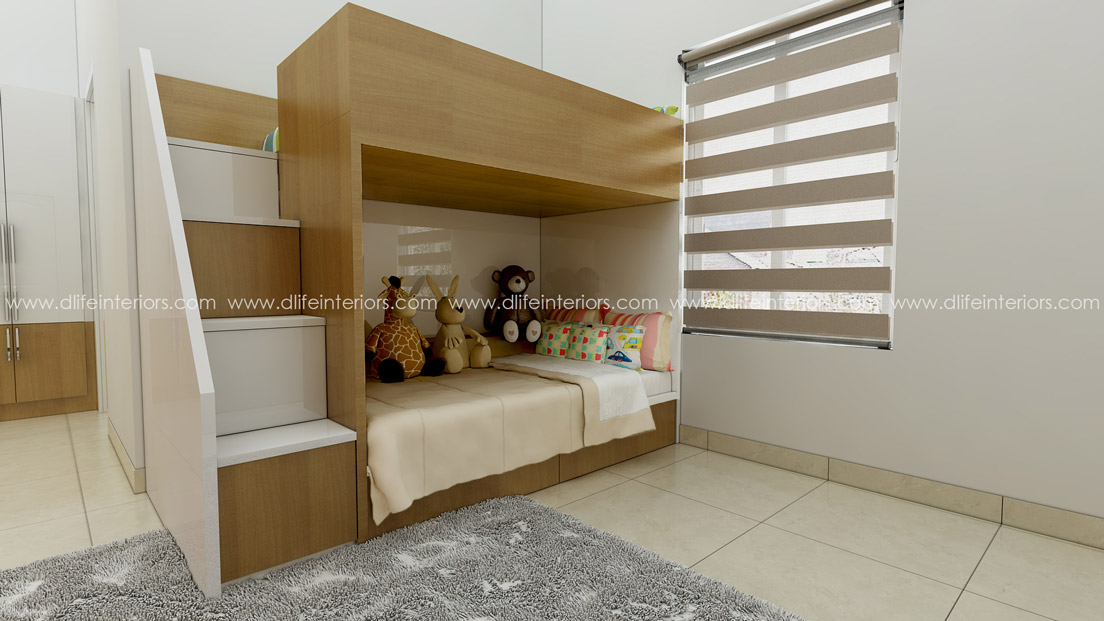Parents, are you tired of tripping over toys and searching for missing socks in your kid's room? You're not alone. Managing clutter in children’s rooms can feel like a never-ending battle. But don't despair! With a little creativity and some practical strategies, you can turn that chaos into a haven of order and fun.
In this article, our interior designers in Pune will help you explore various space-saving tips to organize your kid's room. From clever storage solutions to playful organization hacks, these tips will help you create a more functional and enjoyable space for your child.
Why A Well-Organized Kid’s Room Matters
A well-organized room does more than just look tidy. It creates a safe and stimulating environment for your child to play, learn, and grow. An organized space can also:
- Reduce stress for both parents and children.
- Encourage responsibility by teaching kids to clean up after themselves.
- Maximize space, making the room feel larger and more comfortable.
Declutter First: The Essential Starting Point
Before you start organizing, it's crucial to declutter. Go through toys, clothes, and books, and decide what to keep, donate, or discard. Involve your child in the process to teach them the value of letting go of items they no longer need.
Tip: Use the "Four-Box Method": one box each for items to keep, donate, sell, and throw away.
Maximize Vertical Space with Shelving Units
When floor space is limited, look up! Installing shelves on the walls can provide ample storage for books, toys, and decorative items. Choose adjustable shelves that can grow with your child’s changing needs.
Example: A set of floating shelves above a dresser can hold everything from bedtime stories to art supplies.
Multi-Functional Furniture is a Game Changer
Invest in furniture that serves multiple purposes. A bed with built-in drawers or a toy chest that doubles as a bench can significantly reduce clutter while adding functionality.
Example: Bunk beds with desks underneath make great use of vertical space and provide a dedicated spot for homework.
Under-The-Bed Storage Solutions
The space under the bed is often underutilized. Use rolling storage bins or vacuum-sealed bags to store off-season clothing, extra bedding, and toys.
Tip: Label the bins so your child knows exactly where to find and return items.
Create Zones for Different Activities
Designate specific areas for sleeping, playing, and studying. This zoning helps kids understand where each activity should take place, making it easier for them to keep things organized.
Example: Use rugs or different paint colors to visually separate each zone.
Hooks and Pegboards for Easy Access
Install hooks or a pegboard on the wall to hang frequently used items like backpacks, hats, and jackets. This keeps them off the floor and easily accessible.
Tip: Lower the hooks to your child's height so they can reach them easily.
Toy Rotation to Keep Things Fresh
Instead of having all toys available at once, rotate them every few weeks. This not only keeps the room less cluttered but also makes old toys feel new again.
Example: Store the rotated toys in a high closet or under the bed until it’s time to switch them out.
Label Everything for Easy Identification
Labels help children know where things belong, making it easier for them to participate in the cleanup process. Use picture labels for younger kids and word labels for older children.
Tip: Label drawers, bins, and shelves to create a straightforward organizing system.
Use Hanging Organizers for Small Items
Hanging organizers, often used for shoes, can be repurposed to store small toys, art supplies, and even snacks. Hang them on the back of doors or inside closets for additional storage.
Example: A hanging organizer with clear pockets can hold everything from toy cars to craft materials.
Personalized Storage Bins for Each Child
If siblings share a room, personalized storage bins can help keep each child's belongings separate and organized. This minimizes conflicts and makes organization more manageable.
Tip: Use different colors or labels with their names to distinguish each child’s bin.
Incorporate Fun Storage Solutions
Make organization fun by incorporating playful storage solutions. Use toy chests shaped like animals, colorful baskets, or themed storage units.
Example: A bookshelf shaped like a tree can make storytime more magical.
Regular Clean-Up Routine
Establish a daily or weekly clean-up routine to maintain organization. Involve your child in this process to teach them the importance of tidying up regularly.
Tip: Turn cleanup time into a game by setting a timer and seeing how many items your child can put away before it goes off.
Get Creative with DIY Projects
Sometimes the best storage solutions are the ones you create yourself. Get crafty with your child and make your own storage bins, labels, or wall organizers.
Example: Use cereal boxes and wrapping paper to create custom drawer dividers.
Consistency is Key
Consistency is crucial in maintaining an organized room. Stick to the systems you’ve put in place and regularly revisit them to ensure they’re working for you and your child.
Tip: Make adjustments as needed, especially as your child grows and their needs change.
An organized kid's room can transform your home environment, making it more enjoyable and functional for everyone. By implementing these space-saving tips, you'll create a room that not only meets your child’s needs but also encourages them to take an active role in keeping their space tidy. If you need assistance from experienced professionals, make sure to consult a team of reliable interior designers in India.





Comments